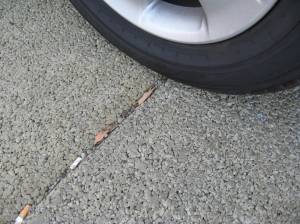Cities of the Future
“Most cities in the industrialized world have well-functioning but unsustainable water systems.” So said Dr. K. Vairavamoorthy, a UK water engineer who heads up the scientific research program at an EU initiative called SWITCH: Managing Water for the city of the future. He spoke yesterday at Berkeley’s College of Environmental design, along with artist-landscape architect Herbert Dreiseitl and Jamie Conley, who’s in charge of Melbourne (Australia’s) water sensitive urban design program.
SWITCH is looking at how to create urban water and wastewater systems that can adapt to an uncertain future. What with climate change, rural-urban population shifts, and increasing demand for water, securing water for cities is uncertain indeed. Professor Vairavamoorthy’s criteria for future water infrastructure point towards strategies for coping with this uncertainty. The topic of uncertainty–how to measure, understand, and ultimately embrace the uncertainties in society and the natural world–is one of my favorites, so I’ll consider each of Vairavamoorthy’s points here.
1) the urban landscape “mimics” natural systems. When rain falls, it splashes off every roof into stone-lined basins, trickling down grassy channels filled with flowering plants. After every storm, water fills the garden, luring frogs, swallows, and dragonflies. Rain fills cisterns that store pure water for drinking and household use. Greywater from washing machines and baths waters fruit trees and vegetables, and street runoff drains into curbside planters filled with sedges, irises, and flowering dogwoods. Creeks run through inviting parks, where wetlands treat sewage and recharge groundwater with runoff. This mosaic of “green infrastructures” revives local springs, so the water company taps local sources rather than distant rivers. Water is abundant—because none of it is wasted.
Here in Oakland, the Lake Chalet at Lake Merritt showcases permeable pavement, a green roof, and a sedge-filled swale that collects parking lot runoff.

This sedge-filled basin fills with runoff from the parking lot during rains, then infiltrates the stormwater into the ground. Pollutants stay in the soil, rather than flowing into Lake Merritt (really a tidal slough).
2) infrastructure is adaptive, that is, it is designed and built in a modular, decentralized way so that it can be changed and upgraded easily. Contrast this with combined sewers found in many North American cities. In San Francisco, separating stormwater and sewage would mean digging up every street in the city–or catching rain in thousands of rain gardens, curb strip swales, and vegetated roofs.
3) infrastructure closes loops in water, energy and nutrient cycles. Herbert Dreiseitl showed examples of commercial buildings in Europe that collect rainwater and use it to flush toilets–and for cooling.
Here’s an idea for San Francisco’s Mirant power plant, which sucks in Bay water, adds chlorine to kill plankton, runs it through cooling towers, then discharges hot water into the bay. Dreiseitl designed a cooling system for a car factory in the UK that uses captured rainwater. The warm water cascades down the curving concrete wall, then cools in the reflecting pool. No other water is needed!



